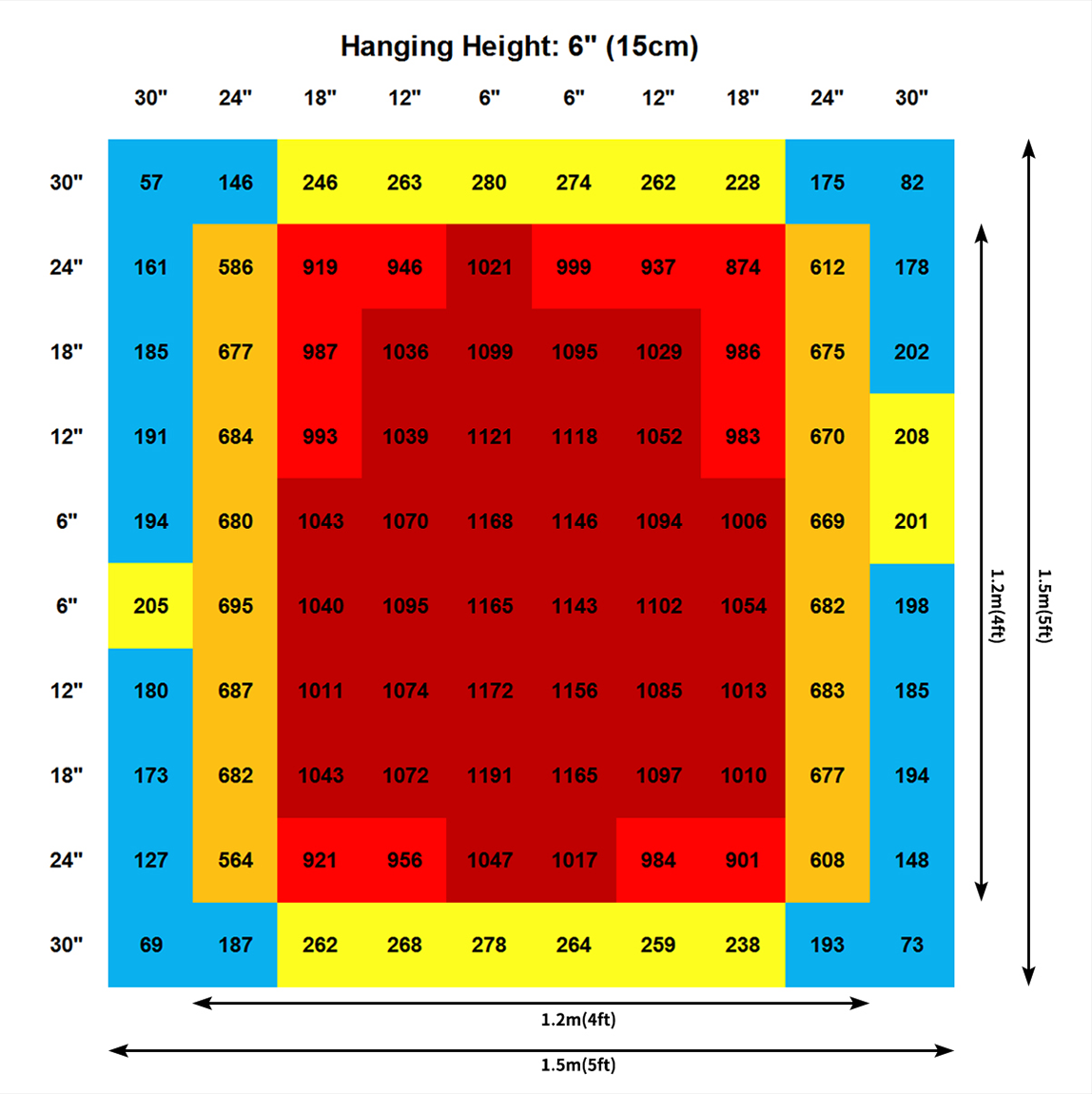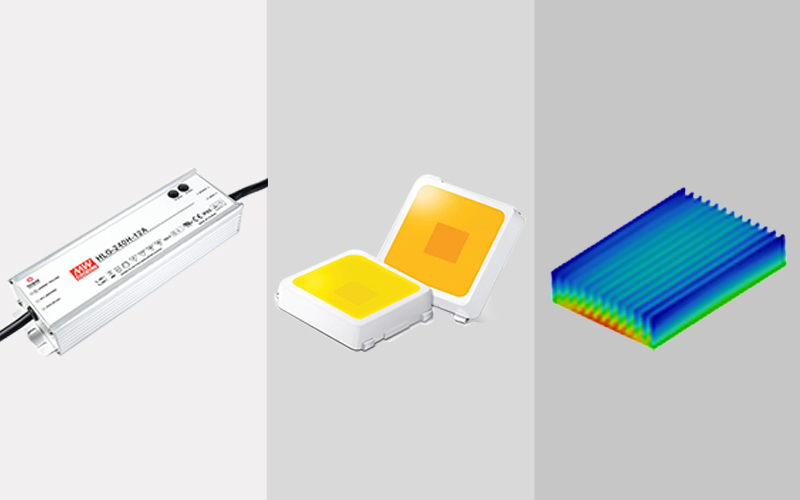What are grow lights?

The LED plant grow lights are an artificial source of light that help plants vegetative growth and development. LEDs are designed to help plants in growth stimulation, growth initiation, vegetative development, and maturity provided that the other desired factors are well under control. LED lights help in starting photosynthesis in plants that are either unable to receive direct sunlight or in such an environment where the sunlight can't penetrate directly into the plants' foliage.
Such an environment usually exist while growing indoors in the greenhouses or hydroponics systems. LED lights are electrically-powered that are enabled to deliver a light that is similar to the sunlight, and growers can very much control the lighting period according to the plant's needs. LED lights are fully controllable for their wavelengths, intensity, temperature, and distance from the plant's foliage at the germination, vegetative growth, flowering, and fruit formation stages for uniform crop development. The plants predominately utilize the Wavelengths between 400 nm to 700 nm for the process of photosynthesis.
This range is commonly called Photosynthetic Active Radiation and abbreviated as PAR. PAR consists of the blue, green, and red bands that plants utilize at variable stages in varying capacities. However, plants utilize a broader range of light spectrum between 260 nm to 780 nm for the process of Photomorphogenesis. This process is different from photosynthesis for the plants to use light as a source of energy only.
Types of LED Grow Lights

Since LED lights have adapted as speedily revocable technology and things keep changing and improving in the benefits of growers, it released several versions that fit the plant's growth requirement in multiple environments. At the moment, the manufacturers are releasing several categories of LED lights and within the categories several versions that are in use of the growers across the world. Grow strips or Bars, spread styles like Spider and Quantum Board, traditional panels, COB, and Auto COB lights are among the lights that are offered to users according to the requirements of their plants and types. Generally, grow bars are meant for the new users as a one-time installment may allow growers to grow plants in a limited area. These bars would perform best if growers are interested in planting microgreens, herbs, vegetables, or ornamental plants in some corner of the house. The prominent feature of every grow light is a broad-spectrum wavelength, PAR, footprint, and the wattage which they use to run such lights. Here is a detailed guide that needs to consider before buying any grow lights for personal or commercial use. Once you're through to these salient features, you wouldn't find any difficulty while selecting a LED grow light of your choice;
Qualities of LED Grow Lights
If you are successful in the preliminary selection, then you're free to grow herbs, vegetables, fruits, microgreens, and Lettuces in your grow room. Specially hydroponics, greenhouse, controlled Climate, and more.
Light spectrum

GLMX720 720W Fine-tuned Full Spectrum
Any LED grows light contains a precise range of the spectrum that is the wavelengths of light that plants use for their growth and development while this requirement keeps changing throughout the developmental process. Generally, the plants need more amount of blue wavelengths during germination and vegetative stages and more red at the flowering and fruit formation stages. However, the light utilization is entirely planting dependent as some plants absorb more amount of light due to their foliage makeup and other less at the same time. The blue spectrum is additionally critical as it contains two spectrums of light. 1st spectrum ranges between 440 nm to 450 nm and the second spectrum within the ranges of 450 nm to 460 nm. Plants use this spectrum after the seedlings emerge from the seeds until the initial vegetative growth. When the plants move into more advanced stages of vegetative growth, they require white light along with blue. The need for the red wavelength increases during flowering and fruit formation stages. The plants utilize the light of variable wavelengths during different growing periods. But, a blue wavelength is critical for initial growth and red for flowering and fruit maturation. So, any light that holds the entire light wavelengths could suit all needs for growing plants indoors.
Amount of light
Any light that you choose for growing plants indoors must possess a combination that delivers Ultra-Violet, blue, orange, red and Far-red spectrum in the following ranges. Otherwise, missing one or more light spectrums from the desired range could lead to production loss.
Ultra-Violet Wavelength (380 nm -410 nm), Blue Wavelength (1st Spectrum 440 nm-450 nm and 2nd Spectrum 450 nm -460 nm), Orange Wavelength (605 nm-610 nm), Red Wavelength (1st Spectrum 620 nm-630 nm and 2nd Spectrum between 655 nm to 660 nm), and Far-Red Wavelength (730 nm).
If you are satisfied with your LED light selection that exhibits wavelengths between the desired lines, then you can move freely to the next step.
Wattage per Square Foot and Coverage

GLMX720 720W Coverage
Your grow room lights are supposed to run for longer if you don't have a direct sunlight source. Indoor grow rooms often keep their lights running for 14 hours a day, and in some instances 18 hours as well. Your selection must base on the desired planting area and the footprint any light holds. A right light selected could lead to saving a lot of cost on electricity. So, it is of utmost significance to recognize the wattage and the daily light consumption your selected LED Grow lights will take. On the other hand, your selection must base on future gardening aspects that the lights would go a long way. Extended areas need more lights whereas growing 1 or 2 plants indoor could limit on buying a single light.
Heat Emission
High heat omitting lights could potentially damage your plants' foliage that causes production loss. Any light that potentially designs to dissipate heat more efficiently is better for long tenure crops.
Always look for the number of cooling fans and aluminum heat sinks that keep the lighting system cooler for longer. Low heat dissipation could result in top leaves burning to stop further development of your indoor crops. Any durable light dissipates heat more quickly and doesn't generate heat in the system if kept running for several continuous hours is best for your plants.
LED Chip Installed

Be sure that the manufacturer offers a quality chipset either from a branded source or manufactures itself. In both cases, the number of chipsets installed and its wattage is considerable.
Quality of Material Used
The quality of any light’s material couldn't judge before using it. There are multiple products with varying dimensions and variable prices. The best option is to check the brand reputation on the sites where this product sells, get customers reviews, and clients post their feedback about services aftersales. Decide your purchase with the relevant supplier if you're fully satisfied with the services they provided on existing sales.
Energy Savings
The offered LED lights must possess a technology that proposes a maximum electricity saving. Such light will probably save your growing room overhead expenditures, especially if you're a hobbyist. The commercial growers readily take care of electricity costs and choose a grow light that best suit their grow room environment.
Lifespan
The best-LED Grow light manufacturer provides years of service and replacement warranty if they are confident that their products worth it. LED lights operate for years under normal conditions. Always prefer maximum viable guarantee and never compromise on a cheap product.
User-Friendly
Modern-day technologies offer easy remote handling for several embedded features like light to plant’s foliage distance adjustment, wavelength setting, and timer controls. Moreover, some extended features also allow you to scheduling light operations for a month or more. Be confident first that the product you are going to purchase is easy to install, handle, and operate under your conditions. Moreover, a research-based manufacturer could solve your query's in a better way and could suggest the best LED Lights that you need.
Here are some best-LED grow lights that could meet your planting requirements in a variety of growing conditions;























